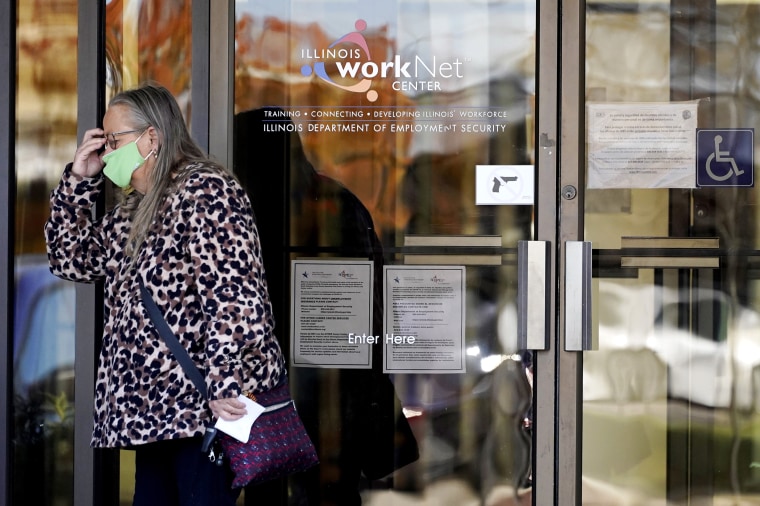The latest weekly jobless claims rose for the first time since early October, reaching 742,000 — a much higher total than economists' forecasts of 710,000.
The data, released Thursday by the Department of Labor, is another strong indication that the labor market faces an unsteady path to recovery, as coronavirus infection rates hit record daily highs and a new wave of lockdowns and school closings sweeps the country.
In the last four weeks, there has been a 42 percent increase in the number of Covid-19 fatalities, from a weekly average of 821 per day in early October to last week’s average of 1,167 per day, according to an NBC News analysis of the available data.
"Regular initial claims alone are 3.6 times higher than their usual pre-Covid-19 levels," said AnnElizabeth Konkel, economist at Indeed Hiring Lab. "Eight months into this crisis, there continues to be tremendous economic uncertainty that’s regularly forcing hundreds of thousands into unemployment."
Even with news of two promising vaccines, the consumer spending that powers the nation's economic growth could shrivel amid extended business closures.
While the holiday season traditionally brings enormous sales volume for retailers, restaurants and movie theaters, many are facing a challenging season. Travel is at a near-standstill, consumers' wallets are already tightly squeezed, and extended pandemic unemployment assistance is set to expire by the end of December.
"The combination of record coronavirus cases and the post-holiday winter months will likely be a grim time for the labor market. To lose unemployment benefits right after the holidays will only ratchet up the economic pain already felt by millions," Konkel said.
More than 21 million Americans are currently claiming some form of unemployment insurance. Out-of-work Americans are also spending more time without regular employment. State unemployment benefits expire after 26 weeks, at which point workers can tap 13 weeks of additional federal pandemic unemployment compensation, which was introduced this spring. The number of workers receiving this benefit soared to a record of nearly 4 million last month.
"The country needs an economic stimulus package right now," said Dan North, senior economist at Euler Hermes North America. "People will be out of income, and if nothing changes, could be facing utility shut-offs and evictions. The holiday sales season is approaching. With no income, no prospect of further benefits or a job, people will stop spending, putting holiday sales at risk which would contribute to more permanent business closures and job losses."
The expiration of government assistance programs likely contributed to an increase in the poverty rate from 9.4 percent in the period from April to June to 11.3 percent in September and October, according to a recent study from the University of Chicago, the University of Notre Dame and Zhejiang University in China that analyzed income level data from monthly U.S. Census surveys.

